Key takeaways:
- Data storytelling must connect emotionally with the audience; numbers alone are insufficient.
- Effective storytelling includes simplicity, context, and a narrative thread that resonates and engages.
- Collaboration and iteration enhance storytelling; diverse insights lead to more impactful data presentations.
- Using customer stories and personas in marketing strategies transforms engagement and fosters emotional connections.
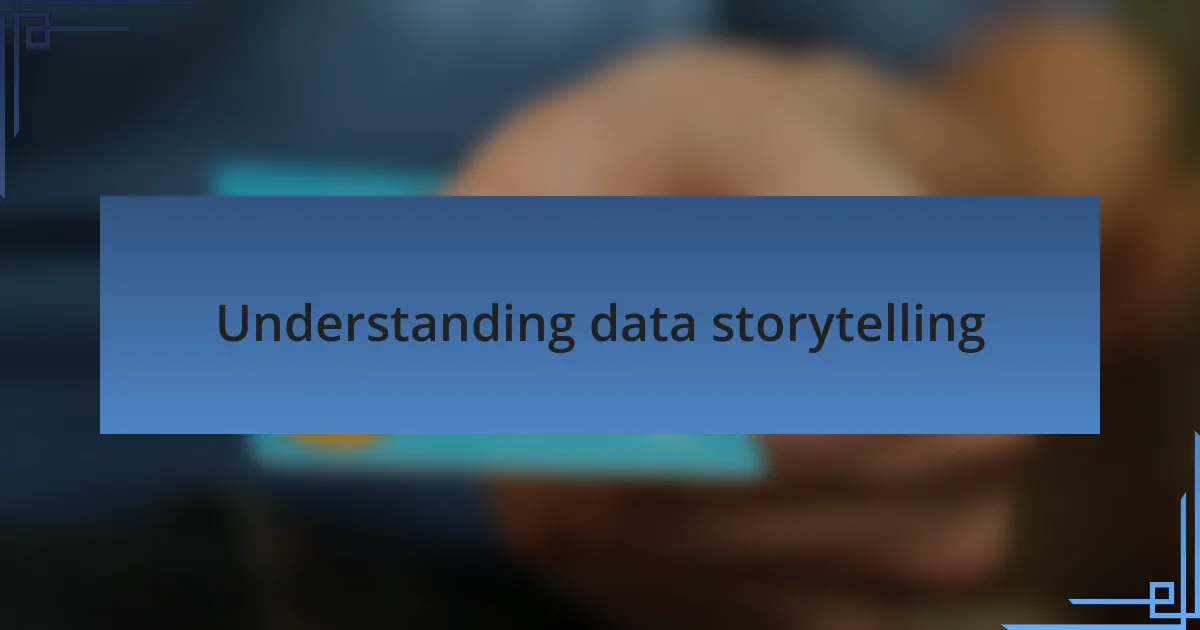
Understanding data storytelling
Understanding data storytelling is crucial for anyone looking to effectively communicate insights in digital marketing. I remember the first time I presented data to my team; I was laden with statistics but failed to weave them into a compelling narrative. That experience taught me that numbers alone don’t resonate; they need a story that connects emotionally with the audience.
Imagine sitting through a presentation filled with charts and graphs but lacking context—easy to lose interest, right? When I started crafting data stories, I focused on the “why” behind the numbers. It’s about creating a narrative that compels your audience to feel something and act. For instance, using a case study in my last project illustrated how a significant drop in conversion rates affected not just the company’s bottom line but also the team’s morale and efforts.
By framing data within real-world scenarios, I’ve seen how it transforms the perception of information. When sharing metrics on social media engagement, I discuss not just the numbers but also the stories behind them—like how a single post sparked genuine conversations. So, how do you make your data relatable? Think about the human element; what does that data mean for the people you’re addressing? This shift in perspective can make all the difference in ensuring your data story truly connects.

Importance of data storytelling
Data storytelling is pivotal because it bridges the gap between raw numbers and meaningful insights. I remember during a campaign analysis meeting when I transformed a slew of statistics into a narrative about customer behavior. By illustrating how these behaviors informed our strategies, the team became not just listeners but engaged participants, eager to contribute to our goals.
Without effective storytelling, data loses its impact. I once faced a situation where a comprehensive report featuring impressive figures failed to spark any interest, leaving my audience uninspired. Reflecting on that moment, I realized it wasn’t about the data itself but how I chose to present it—an opportunity to illuminate the story behind every number and its implications for our audience.
Moreover, emotional resonance is key when sharing data. I’ve shared stories of customers positively impacted by our initiatives, and I noticed the shift in energy in the room. When your audience can connect emotionally with the data, they become more invested in your message. So, how can you tap into that emotional connection? Consider who your audience is and what narratives they find compelling; that insight is often the missing thread that transforms data into a powerful story.
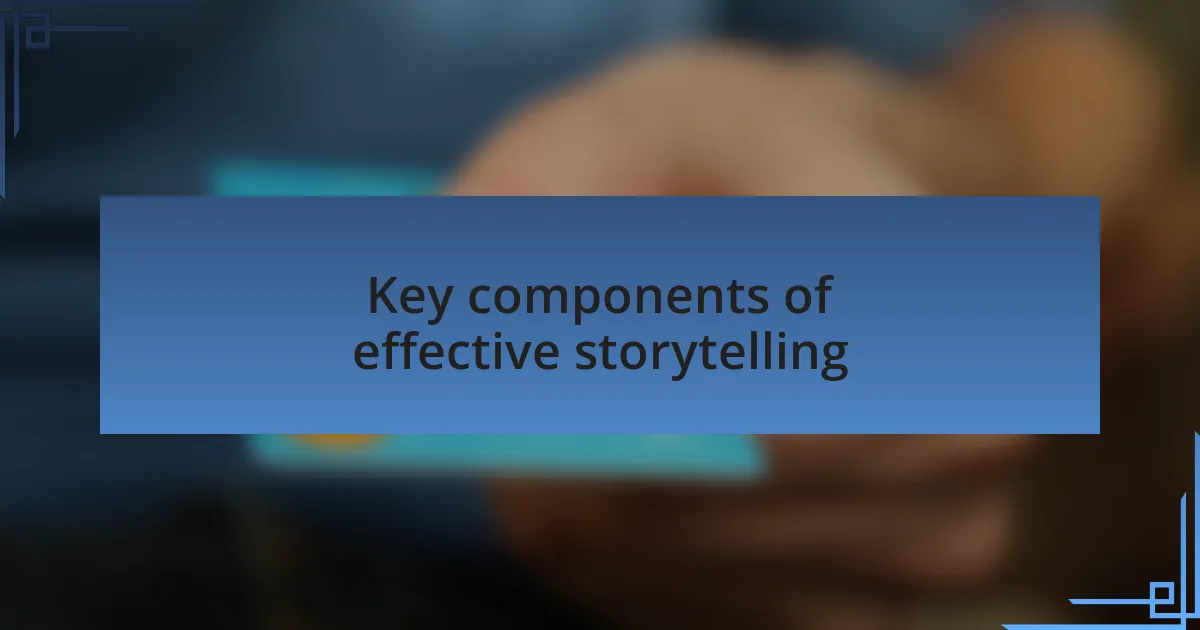
Key components of effective storytelling
One of the critical components of effective storytelling is simplicity. I’ve found that when I distill complex data into straightforward visuals, it genuinely resonates with my audience. For instance, during a recent presentation, I used a simple bar graph to showcase our campaign’s performance over time. The clarity of that visual sparked conversations and prompted deeper questions, which I hadn’t anticipated.
Another essential element is context. I remember a time when I shared customer engagement stats without setting the scene. It felt disconnected. But when I framed those numbers within the broader trends of our industry, everything clicked. Providing context helps the audience understand the significance of the data, making it more relatable and impactful.
Finally, weaving a narrative thread creates a sense of continuity. I’ve had success using customer testimonials to guide my storytelling. When I shared a success story around data-driven decisions, my audience leaned in, captivated. This not only highlights the data but also creates a memorable connection that keeps your message alive long after the presentation ends. Have you ever considered how your own experiences could serve as the narrative backdrop for your data? That’s where true storytelling magic can happen.
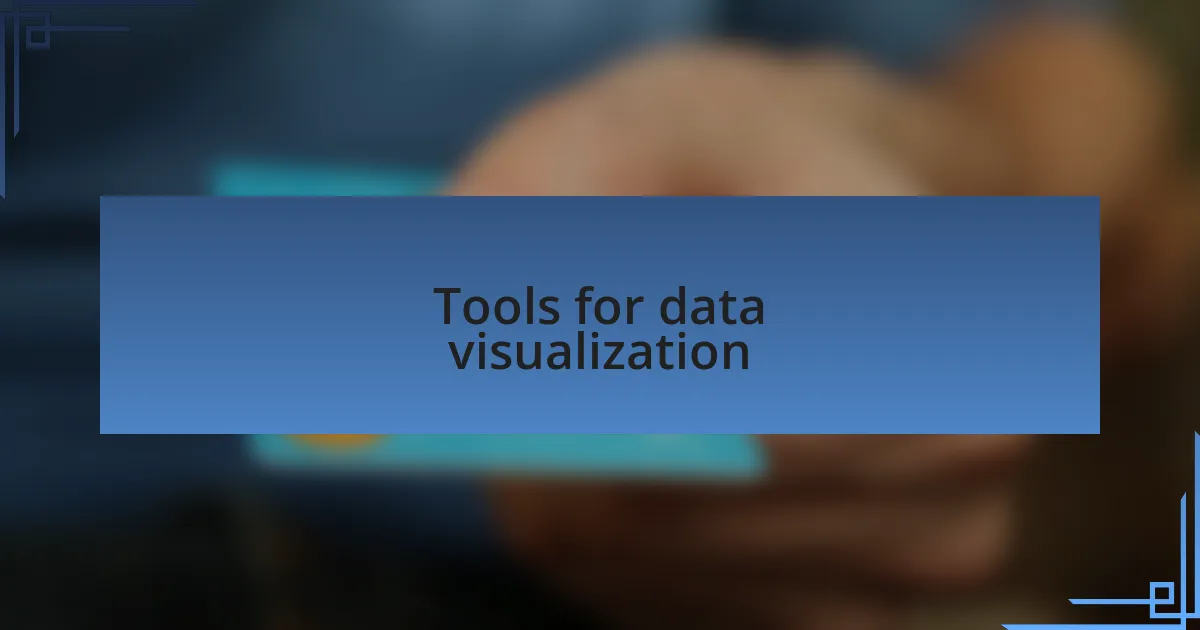
Tools for data visualization
When diving into data visualization, the choice of tools can significantly impact how effectively your story is conveyed. I’ve personally enjoyed working with Tableau, as its drag-and-drop functionality allows me to create engaging visuals swiftly. There’s something satisfying about seeing a complex dataset transform into an interactive dashboard that not only informs but also captivates the audience’s attention.
Another tool that has piqued my interest is Google Data Studio. The collaboration features have been a game changer for my team. I recall a project where we needed input from various departments. Using Data Studio, we were able to collaborate in real-time, tweaking visuals based on collective insights and ensuring everyone felt included. Have you thought about how such collaboration could enhance your storytelling efforts?
I’ve also experimented with Infogram, which excels at creating infographics. I vividly remember the “aha” moment when a simple infographic I designed led to a 20% increase in audience engagement. It made me realize how effective visual storytelling can be in breaking down complex information. Each of these tools has taught me that the right visualization can make data not just accessible, but truly impactful. What tools have you found to help convey your message?
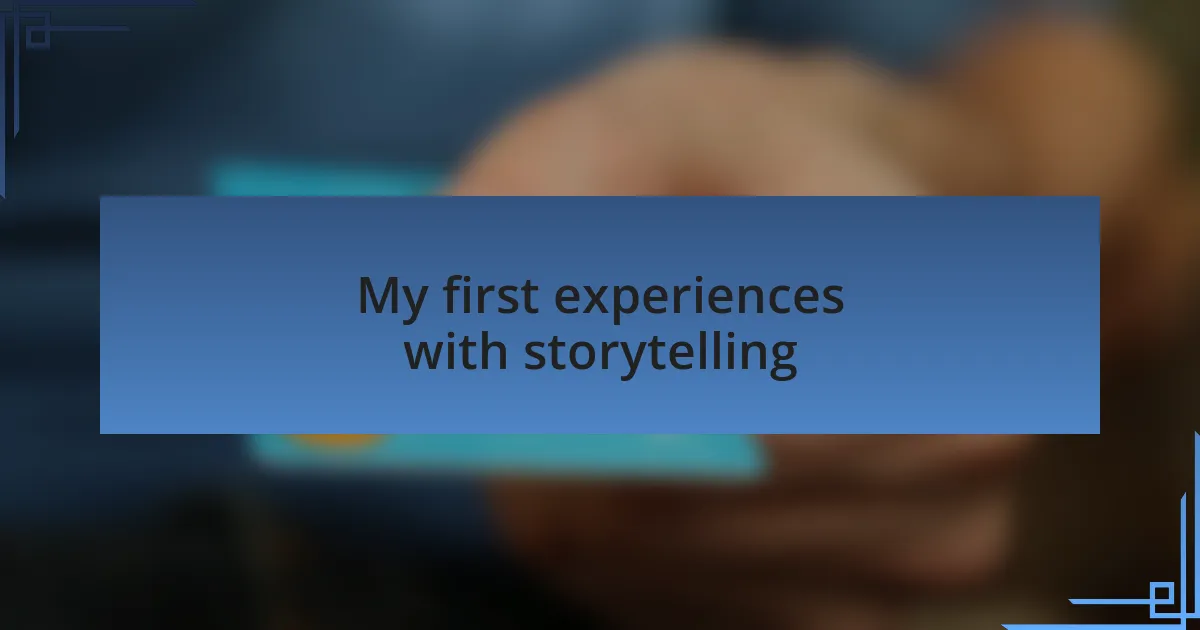
My first experiences with storytelling
I still remember my first attempt at storytelling through data. It was during a college project where I had to present research findings to my classmates. I thought simple charts would do the trick, but as I stood there, I realized they weren’t enough to capture their attention. It was a humbling experience, feeling the disconnect between the data I was presenting and the audience’s engagement.
A pivotal moment came when I decided to weave a narrative around the numbers. I shared a personal connection to the data, recounting how it related to real-life experiences. I incorporated my own struggles and triumphs, which breathed life into those dull charts. Suddenly, I could see my classmates leaning in, captivated by the story behind the statistics. Have you ever found that a personal touch can shift the entire dynamic of a presentation?
As I continued my journey, I started recognizing the emotions behind the data. There was one particular case study I worked on about a local charity’s impact on the community. I interviewed beneficiaries, listened to their stories, and integrated those voices into my presentations. The moment I shared a heartfelt story of a family whose lives had been transformed, I could feel the room’s atmosphere change. It made me realize the profound power of storytelling in data—it’s not just about numbers; it’s about touching hearts.

Lessons learned from data projects
One of the key lessons I learned from my data projects is the importance of context. During a project analyzing customer feedback for a campaign, I initially presented raw metrics like response rates and satisfaction scores. It hit me hard when I recognized that without context, the numbers were directionless. I started framing the data within the bigger picture of our brand’s story and strategy, which ultimately made the insights clearer and far more impactful. Have you ever felt lost when looking solely at data without understanding what it represents?
Another critical takeaway was the significance of collaboration. Working alongside designers and marketers taught me that diverse perspectives can enhance data storytelling. For instance, in one project, I teamed up with a graphic designer to create an interactive dashboard, transforming static data into a dynamic experience. Seeing how visuals made the data more relatable deepened my appreciation for teamwork. Have you considered how collaborating with others can elevate your projects?
Lastly, I learned the necessity of iteration. Early on, I was hesitant to revisit and refine my presentations. But after several rounds where feedback from peers greatly enhanced my narratives, I realized the power of revisiting my work. I recall one instance where a simple adjustment in phrasing changed the audience’s understanding entirely. It made me wonder: How often do we overlook the importance of revising our insights for clarity and deeper connection?
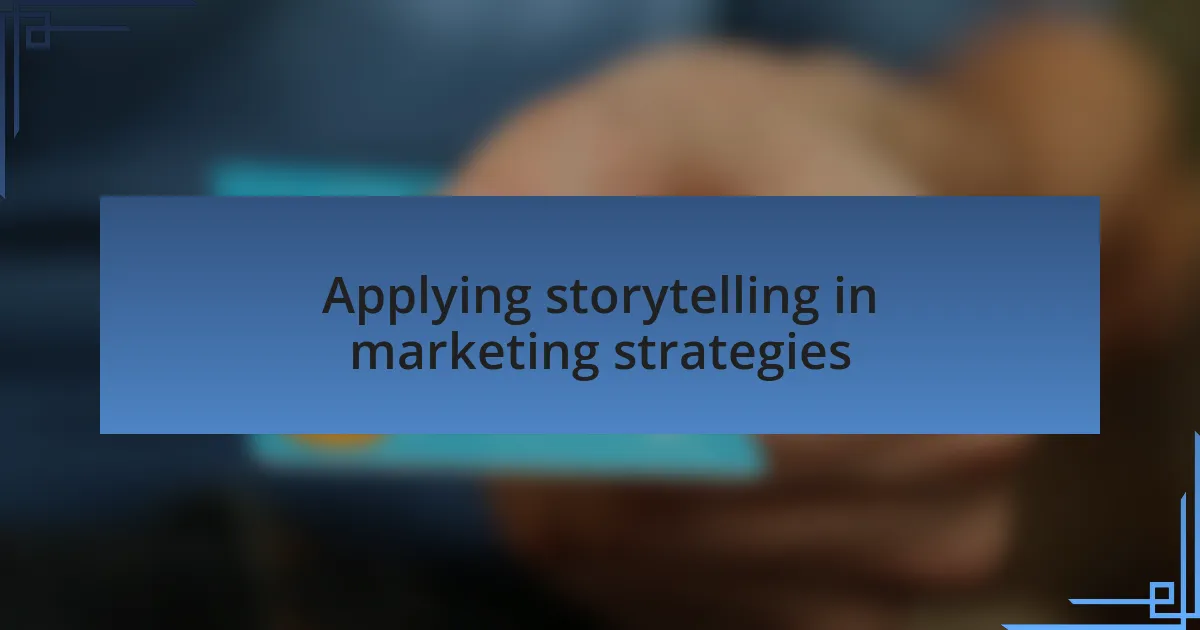
Applying storytelling in marketing strategies
Understanding how to weave storytelling into marketing strategies has been a game-changer for me. I remember a time when my team launched a campaign that focused solely on product features. While the numbers were decent, there was a noticeable disconnect with our audience. By shifting our approach to include customer stories, we highlighted real-life applications of our product, creating a deeper emotional connection that drove engagement up significantly. Have you ever noticed how a compelling narrative can transform mere statistics into something that truly resonates?
One strategy I’ve found effective is using personas to guide narrative development. When I crafted marketing messages, I would focus on specific customer archetypes, imagining their hopes and struggles. This perspective allowed me to create content that spoke directly to their experiences, making them feel seen and understood. In one instance, this approach led to a significant surge in conversion rates as customers felt our brand genuinely reflected their journey. Does thinking of your audience as real individuals change the way you approach your messaging?
I’ve also experimented with the “hero’s journey” framework in my campaigns. By positioning our customers as heroes overcoming challenges with the help of our product, we crafted a story that was not only engaging but also empowering. I recall a particular success story shared in a video format, where a customer narrated their experience and challenges. The emotional impact not only inspired others but also fostered a sense of community around our brand. Have you explored how your customers’ stories can serve as the backbone of your marketing strategy?